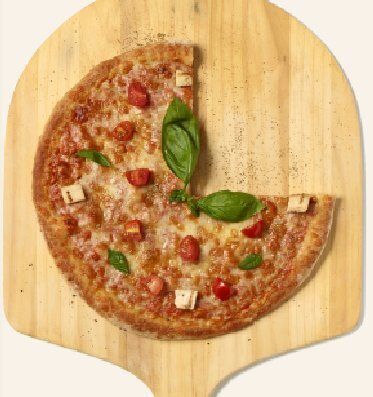
The average American consumes 23 pounds of pizza every year, but a recent development in the food industry has made it possible for that figure — but not the already bursting national waistline — to balloon.
Glasgow University nutritionist and professor Mike Lean and British entrepreneur Donnie Maclean teamed up to develop what they claim is a nutritionally balanced pizza. Each serving of the frozen pizza contains 30 percent of an individual’s daily nutritional requirements for vitamins, minerals, calories, carbohydrates and protein.
Swapping in traditional ingredients for nutritional replacements — adding seaweed to the crust, for instance — the team was able to reduce the amount of salt and fat in their pizza while adding in essential vitamins and nutrients. Other tricks, like adding red pepper to the tomato sauce to boost its vitamin C content and concocting unusual vegetable combinations, helped them strike the perfect nutritional balance.
“We know there’s pressure on the food industry to get the levels of fat down and levels of salt down,” said Maclean, whose company, Eat Balanced, is dedicated to making it easier for people to eat a balanced diet.
“There’s demand from consumers saying they’re looking to eat better, and people know they need balanced diets, so we’ve merged everything together to come up with one complete pizza solution: a complete balanced meal and one with portion.”
Maclean said he has developed a software system that allows him to analyze a food’s recipe and determine both the nutrition content as well as adjustments to portion sizes and ingredients to find the nutritional sweet spot.
“We created recipes that brought down anything that was too high and pulled up what was too low so we got a fairly level grasp on all the different nutrients you need,” he told Huffington. “It’s difficult to do pepperoni because it’s so high in fat and salt. But I could do hundreds of varieties of pizza with all kinds of different toppings.”
And while his product is expected to make its way to U.K. grocery stores by the fall, he believes the U.S. is particularly hungry for his product — and he’s anxious to get it to America.
“I think the States have a bit more of a problem [than the U.K.] because they’ve had this all-you-can-eat-buffet culture for the last fifteen years,” he said. “This has done some damage and people are used to eating more in terms of portions. Something has to be done. It’s not just calories — there are companies like Weight Watchers that focus on that, but we focus on the bigger picture. We’re looking at the full spectrum of all the nutrients to make sure what you eat gives you everything you need.”
He’s now looking for a US-based manufacturing partner to license his product, with a particular eye on the Northeast and the goal of getting a deal on the books by year’s end.
Until then, there are a few places in the U.S. that are making it easier to enjoy a healthier slice. The Miami-based Power Pizza makes its dough with whey protein, which claims to preserve lean muscle tissue and promote fat loss. New York’s Pizza Roma imports flour from Rome and allows it to rise for 96 hours, using less yeast that it claims results in a lighter crust that is easier to digest. And then there’s Naked Pizza, with 20 locations in the U.S., which uses a prebiotic dough mix of more than 10 seeds and grains. Naked allegedly promotes digestive health, bone health, weight management and glycemic response.